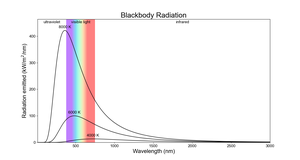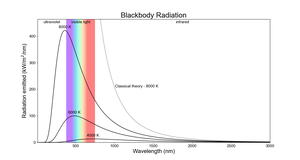Glossary term: Electromagnetic Radiation
Description: When 19th century physicists described electric and magnetic phenomena, they found that there is a way for patterns of electric and magnetic fields to propagate together through space at the speed of light, even in situations where there are no electric charges nearby. These waves are known as electromagnetic waves, or electromagnetic radiation. Elementary electromagnetic waves can be classified according to their wavelengths, and the resulting electromagnetic spectrum includes, from shorter to longer wavelengths: gamma rays, X-rays, ultraviolet, visible light, infrared, submillimeter, and radio waves (including millimeter/microwaves). Electromagnetic radiation from distant astronomical objects is astronomers' most important source of information about such objects.
Related Terms:
- Electromagnetic Force
- Gamma Ray
- Infrared (IR)
- Light
- Microwave Radiation
- Ultraviolet
- Visible Spectrum
- Submillimeter Astronomy
- X-ray
See this term in other languages
Term and definition status: This term and its definition have been approved by a research astronomer and a teacher
The OAE Multilingual Glossary is a project of the IAU Office of Astronomy for Education (OAE) in collaboration with the IAU Office of Astronomy Outreach (OAO). The terms and definitions were chosen, written and reviewed by a collective effort from the OAE, the OAE Centers and Nodes, the OAE National Astronomy Education Coordinators (NAECs) and other volunteers. You can find a full list of credits here. All glossary terms and their definitions are released under a Creative Commons CC BY-4.0 license and should be credited to "IAU OAE".
Related Diagrams
Blackbody Radiation
Credit: IAU OAE/Niall Deacon
License: CC-BY-4.0 Creative Commons Attribution 4.0 International (CC BY 4.0) icons
Blackbody Radiation - UV Catastrophe
Credit: IAU OAE/Niall Deacon
License: CC-BY-4.0 Creative Commons Attribution 4.0 International (CC BY 4.0) icons










